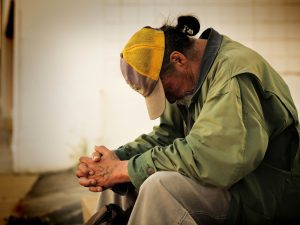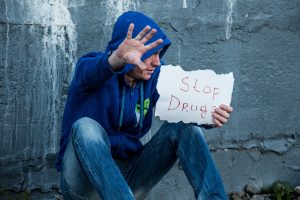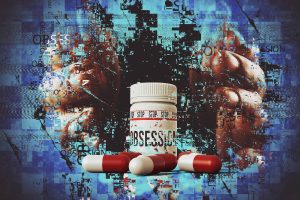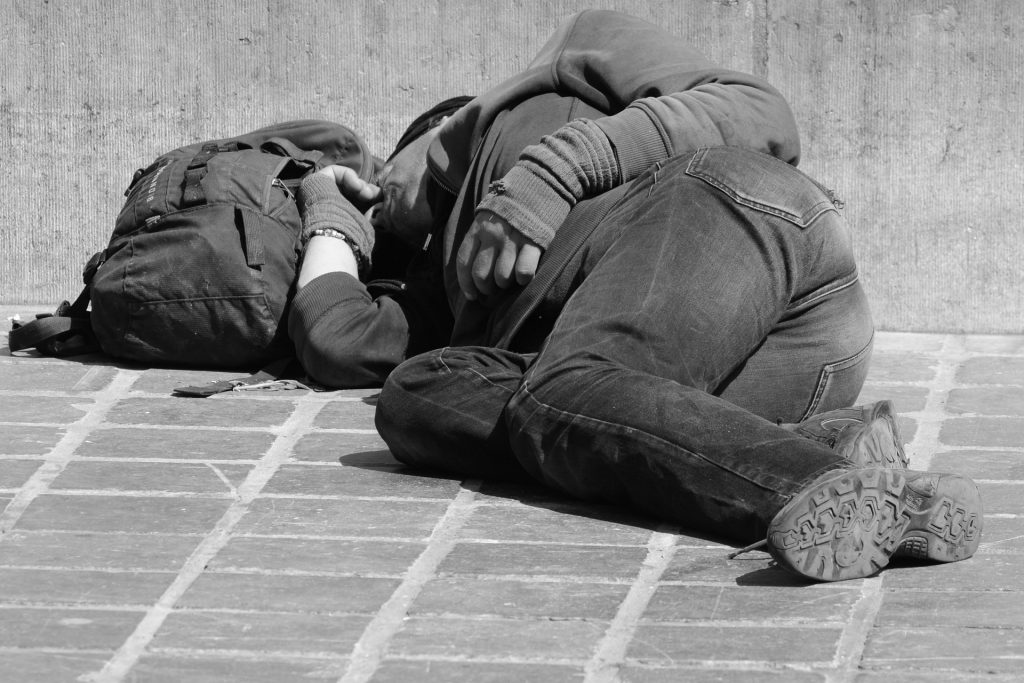Approximately 17% of the American population is homeless. This equals to almost half a million people.
Yet, there are numerous misconceptions about addiction and homelessness. For example, some think individuals become homeless or addicted because of poor decisions.
They assume the so-called “homeless drug addicts” live that way because of moral shortcomings or personality flaws.
Anyone who has undergone addiction treatment knows this is false and a dangerous oversimplification of factors contributing to addiction and homelessness.
These factors often overlap – many homeless individuals struggle with substance abuse, and the reverse is also true.
Generally, there is a connection between addiction and homelessness. Read this article to the end to understand this connection, the underlying causes, and the services these two at-risk groups can seek for assistance.
Is It a Simple Matter of One Causing the Other?
Society today frequently dismisses the homeless as just drug or alcohol addicts. However, life may offer a fair share of trauma, pain, suffering, and other detrimental factors that significantly affect our lives.
Researchers have made a promising discovery in their attempt to find an answer to the “chicken or the egg” question. According to the National Coalition for the Homeless, addiction can contribute to and lead to homelessness.
Worse still, mental illness frequently serves as the root cause of addiction and homelessness. This fact shows how misplaced negative stereotypes regarding addiction and homelessness are.
Understanding Homelessness
Most of the time, homelessness is a temporary situation and not a permanent state. It does not reflect who a person is.
Thus, the population of homeless persons is quite dynamic and not static, as is frequently mistakenly believed. This population is identified through a phase in time.
The definition of “homeless” varies significantly based on the source and context. But generally, individuals without a “stable, permanent, and suitable night-time habitation” are considered homeless.
Data shows that about half a million people spend the night outside, in emergency shelters or transitional housing programs on any given night.

The circumstances surrounding homelessness take different forms. Individuals experience it either because they are:
- Unsheltered – Camping outside, living on the streets, in cars, or abandoned structures.
- Sheltered – Residing in emergency shelters or transitional housing.
- Double up – Temporarily staying with family or friends.
Homeless people are reported to suffer disproportionately from all medical problems, including drug abuse and addiction.
Substance Abuse Frequently Accompanies Homelessness
According to research, substance abuse is more prevalent among homeless people than the general population. Studies report that:
- Around 38% of homeless people abuse alcohol
- Alcohol abuse is highly prevalent among older people within the homeless group
- About 26% of homeless people use drugs in addition to alcohol
- Drug abuse is more prevalent among younger homeless persons.
The United States Conference of Mayors invited people from 25 cities to list the leading causes of homelessness in their area as part of a poll. About 68% cited substance abuse as the leading cause of homelessness among single adults.
A different study interviewing homeless people found that drug or alcohol abuse was a major cause of homelessness among two-thirds of the respondents.
Similar figures are observed for homeless military veterans with substance use disorders. In other words, there is a connection between addiction and homelessness.

Newly homeless people tend to turn to drugs or alcohol as a coping mechanism to deal with highly stressful life conditions, such as traumatic loss, family conflicts, serious health conditions, sudden career detours, or tragic financial loss.
Studies suggest that users become more immersed in substance abuse after developing alcohol and drug dependence.
When you look at this downward trend in the context of homelessness, it becomes clear that there are many obstacles to recovery.
Mental Health Issues and Homelessness
According to the Office of National Drug Control Policy, around two-thirds of perpetually homeless people have a core substance use disorder or another chronic medical condition.
Additionally, about 30% of individuals with severe mental illness experience perpetual homelessness. These psychological and physical health problems may make it difficult for a person or a family to find and maintain stable, affordable, and suitable housing.

Changes in public policy over the past few decades can explain the high numbers of mentally ill individuals – mostly substance users- living on the streets in the US.
The healthcare system tends to discharge mentally ill persons to free up hospital beds prematurely. It saves costs when it releases people from psychiatric hospitals.
Yet, overall taxpayer costs increase because treatment is moved to more costly prisons and jails. There is also the issue of morality to consider.
Alcoholism and Homelessness
A study conducted on perpetually homeless, alcohol-dependent individuals in New York City reported that all these individuals started using alcohol when they were young and quickly developed alcohol dependence.
According to the study, nearly two-thirds of them were children of alcoholic parents. Several of them experienced abuse right within their own homes.
Most of them fled home by the age of 18. About half of them had a mental illness, with anxiety, psychosis, and mood disorders being some of the common diagnoses.
That is to say, alcohol dependence in childhood increases the chances of chronic homelessness. In such instances, buying alcohol may take precedence over finding accommodation.
And still, an alcoholic is less likely to seek therapy and recovery when they cannot meet these basic needs. Frustration and unhappiness may result from this, which encourages alcohol dependence.
It is a terrible cycle that can spiral out of control for a lifetime if they don’t seek professional assistance.
Acquiring data on addictions among homeless people at any particular time is hard. One reason is that homeless people are typically excluded from census data.
Besides, if staying in a shelter requires abstinence from drinking, homeless people may avoid reporting their intake of alcohol.
Treating the Homeless Population: What Works Best?
Only 25% of people suffering from alcohol or drug addiction and homelessness will likely seek the necessary treatment. A holistic approach is essential to address the myriad factors contributing to homelessness.
The following characteristics emerged in a review of 20 clinics offering substance use therapy to homeless people.
- Access to housing – A safe home environment is vital to rehabilitating homeless people.
- Qualified staff– An effective program depends on a well-trained team that provides caring, flexible, and professional care.
- Clinic-centered services – These customized treatment programs can offer a better rehabilitation route than a program designed to suit everyone.
- Integrated services – As co-occurring mental illnesses are common among homeless people, having diverse specialists in-house can offer centralized, coordinated care for better efficacy.
- Comprehensive services – Addressing the numerous needs of homeless people, such as their social and survival needs, handles homelessness holistically (treating the whole person, not just symptoms).

Homeless people are frequently treated in emergency rooms and psychiatric hospitals, although other alternatives are available. Outpatient and non-hospital residential programs often offer a broader range of services.
Hospital detox is the most typical kind of inpatient treatment for homeless people. Twelve-Step groups, outpatient detox, and individual counseling are examples of outpatient treatment interventions. Regrettably, outpatient care does not offer housing, which is essential for homeless people.
Other housing options that are mindful of drug use and mental health issues include:
- Sober or dry housing – Has a strict abstinence policy. Loss of housing may arise from substance usage.
- Damp housing – Homeless people live under one roof regardless of whether or not they have substance use disorders. Abstinence is not kept track of, but illicit drugs are prohibited. Alcohol consumption is banned in public areas. Moreover, therapy services might be made available.
- Wet housing – Implements a harm-reduction strategy and directs individuals to services for substance abuse. It does not, however, necessitate participation. Alcohol consumption is allowed, but illegal drugs are not.
Bottom Line
The link between addiction and homelessness is an unfortunate manifestation of cause and effect, but all is not lost.
If you or your loved one is homeless and struggling with drug or alcohol addiction, consider seeking help before things get out of control and cause permanent damage to your health and finances.
At CCIWA, we help you find substance use treatment options in your local area. Contact us today to get started!



